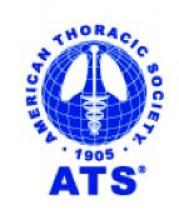Here is a glimpse of some of the important research that will be presented at this meeting.
The findings of several chronic obstructive pulmonary disease (COPD) drug trials will be discussed during a session entitled “ICS [Inhaled corticosteroids] in COPD: The Pendulum Keeps Swinging,” which is scheduled to occur at 9:15 a.m. in Room 14 A-B (Mezzanine Level). Among the research to be presented are the latest findings of the phase 3 IMPACT study of 10,355 symptomatic COPD patients with a history of moderate to severe exacerbations. This study compared the use of an inhaled therapy that comprised a corticosteroid, a long-acting muscarinic antagonist (LAMA), and a long-acting beta2-agonist (LABA) with the use of two other therapy combinations – a corticosteroid and a LABA, or a LABA and a LAMA. (Lipson DA et al. N Engl J Med. 2018 Apr 18;378:1671-80). Patients were randomized to receive either a once-daily combination of 100 mcg fluticasone furoate (a corticosteroid); 62.5 mcg of the LAMA, umeclidinium; and 25 mcg of the LABA, vilanterol; or dual inhaled therapy involving either 100 mcg fluticasone furoate plus 25 mcg of vilanterol, or 62.5 mcg of umeclidinium plus 25 mcg of vilanterol for 52 weeks.
One of the updates on this trial is that using the triple therapy significantly reduced on-treatment all-cause mortality over using the LAMA (62.5 mcg of umeclidinium) plus LABA (25 mcg of the vilanterol) dual therapy. Fifty of the patients who received triple therapy died (1.20%), versus 49 patients in the corticosteroid plus LABA group (1.19%) and 30 patients (1.88%) in the LAMA plus LABA group. A 42.1% reduction in risk of all-cause mortality occurred for patients who took the triple therapy, when compared with patients who took the LAMA/LABA combo (95% confidence interval, 11.9%-61.9%; P = .011), according to an abstract on the ATS International Conference’s website.
At the same time on Sunday, researchers will be presenting their research in a session entitled “Sleep Disordered Breathing, Cardiovascular Disease, and Mortality,” in Room 3 (Upper Level) of the convention center. One of the abstracts that will be discussed compared the long-term effectiveness of noninvasive ventilation (NIV) with continuous positive airway pressure (CPAP) in patients with obesity hypoventilation syndrome with severe obstructive sleep apnea. In this multicenter open-label, randomized, controlled trial, Sanchez Quiroga M et al. analyzed the results for 202 patients who used one of the two treatments for at least 3 years. Among this study’s findings were that the mortality rates and the number of cardiovascular events that occurred were similar in the two treatment groups. The mortality rate for patients who used CPAP was 14.7%, compared with 11.3% for the patients who received NIV (adjusted hazard ratio, 0.73; P = .439), and the cardiovascular events per 100 person-years were 5.1 for CPAP and 7.46 for NIV (P = .315). The researchers concluded that both treatments are equally effective for the long term, but that CPAP should be “the preferred treatment modality,” because it’s cheaper and easier to implement.
On Monday morning, researchers will present their findings of the short-term cardiovascular effects of 30 pulmonary arterial hypertension patients’ use of the beta blocker carvedilol, in 3.125 mg doses taken twice a day. Right ventricular systolic pressure (RVSP) decreased by an average of 11 mmHg (P = .003) in this double-blinded, randomized, controlled open-label trial with a 1-week run-in period. Cardiac output decreased by an average of –1.8 L/min (P less than .0001), but RVSP was inversely associated with cardiac output. “Short-term carvedilol could potentially identify a subgroup for long-term therapy based on initial drop in RVSP and heart rate response,” noted Farha SY et al. in their abstract. None of the patients experienced any side effects from taking the drug. More details on this research and other studies on pulmonary hypertension will be presented at 9:15 am in Area B (Hall A-B2, Ground level) of the convention center, in the session entitled “Surf’s Up: Riding the Wave of Clinical Research in Pulmonary Hypertension.”
Look for all of our on-site coverage of the conference at mdedge.com/chestphysician next week.


